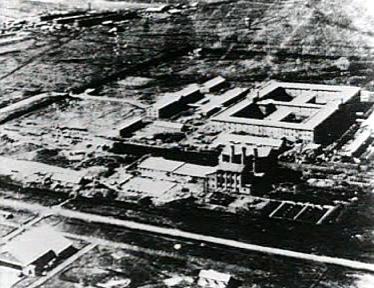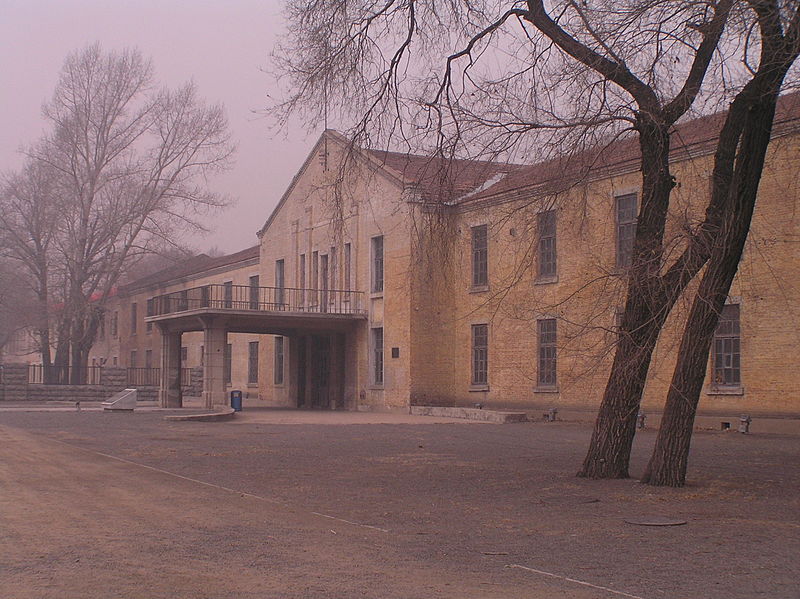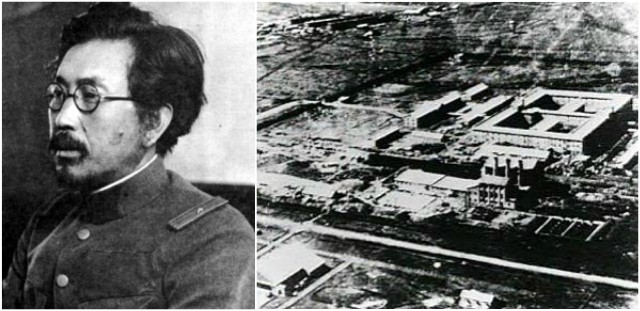During WWII, the Japanese army had a secret biological warfare research unit in Manchuria called Unit 731. Unit 731 was responsible for some of the most notorious war crimes carried out by Japan. General Shiro Ishii was the lead physician of Unit 731.
Biological Warfare was banned by the Geneva protocol of 1925, and General Shiro Ishii thought that since it was banned, it must be effective. Unit 731 conducted a series of cruel experiments in order to test how the human body reacts when subjected to harsh conditions, poisonous substances, and lethal diseases.

Unit 731 was housed in a gigantic complex in Heilongjiang Province in northeast China, covering six square kilometers and consisted of more than 150 buildings, surrounded by a wall and high voltage wires, with living quarters and amenities for up to 3,000 Japanese staff members, 300-500 of whom were medical doctors and scientists.
The Japanese had 4,500 containers for raising fleas, six giant cauldrons to produce various chemicals, and around 1,800 containers to produce biological agents in the complex. Many bacterial diseases were studied to determine their warfare potential, including plague, anthrax, dysentery, typhoid, paratyphoid, cholera, in addition to many others. Insects, new drugs, chemical toxins, and frostbite were also studied.

Unit 731 had a bacterial production area that was designed to produce large quantities of bacteria for eventual use as biological weapons. To test the bacteria they deliberately infected and vivisected human subjects. They used live patients but no anesthesia, thinking that otherwise, they wouldn’t be able to obtain accurate information on what was happening to the human body. They also researched how to protect themselves against the disease, which means that their biological weapons program was strong offensively and defensively.
General Ishii turned his attention to the plague bacterium as a candidate for a biological weapon since its casualties were higher than other diseases. So he constructed a clay bomb filled with oxygen and plague-infected fleas that could be dropped from aircraft at a height of 200-300 meters without leaving a trace. Each bomb contained 30,000 fleas.

On October 4, 1940, the Japanese dropped plague-infected fleas over Quzhou, a small town in western Zhejiang Province. In just one year more than 2,000 people in Quzhou died from this plague. The next year, a railway worker brought the plague from Quzhou to the city of Yiwu and more that 1,000 people in Yiwu died from this plague within a year.
In 1942 the Japanese also made a series of anthrax and glanders attacks on many villages in the Jinhua area of Zhejiang Province and around 6,000 inhabitants of Jinhua were infected by bacteria from biological weapons. More than 3,000 people died after they got infected.

For over 13 years, the Japanese performed experiments in the Unit 731 Complex. Their activities were ended in 1945 when Russia invaded Manchuria in August. Unit 731 was burned and all evidence were destroyed. General Shiro Ishii and the other workers were never punished for their war crimes.
